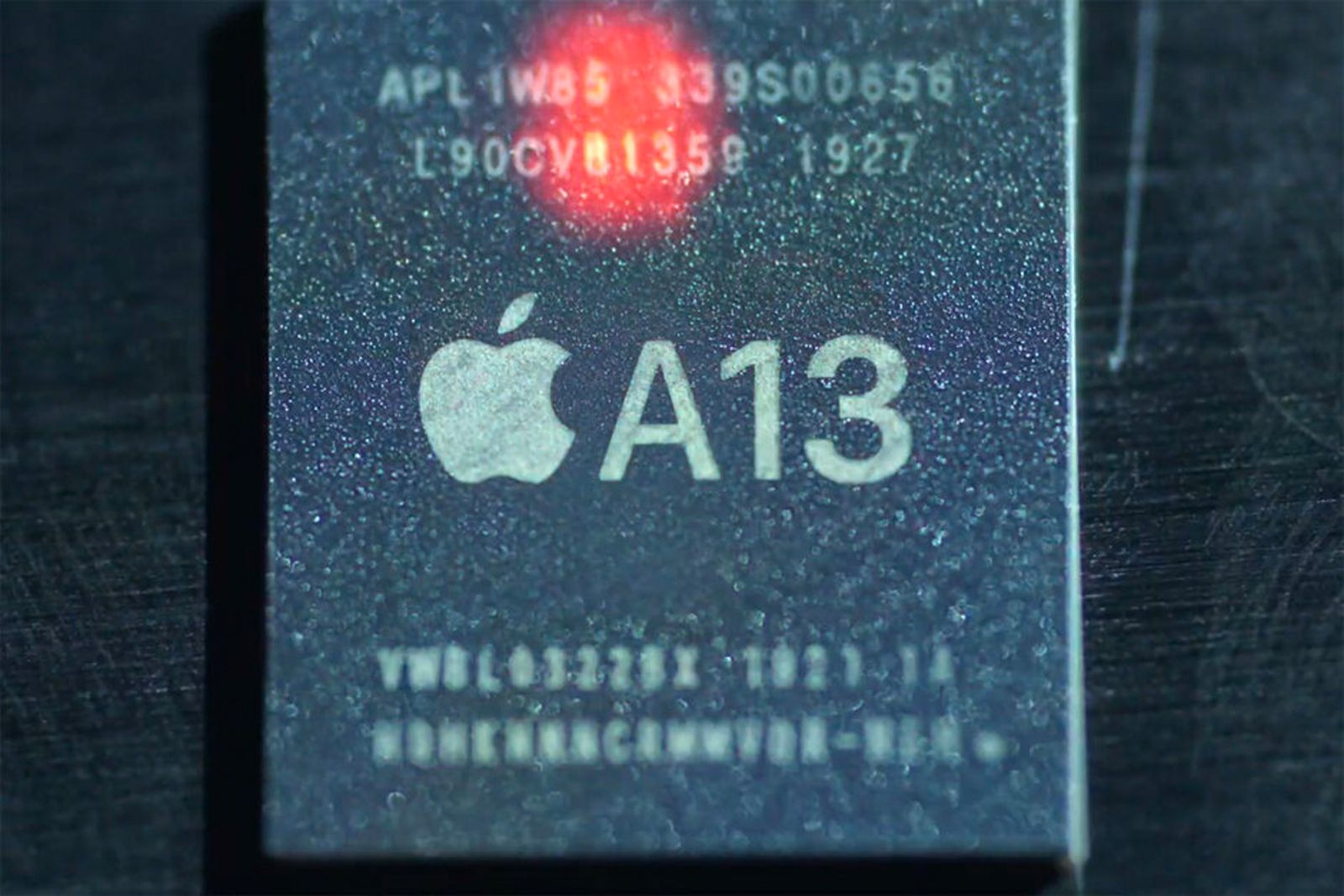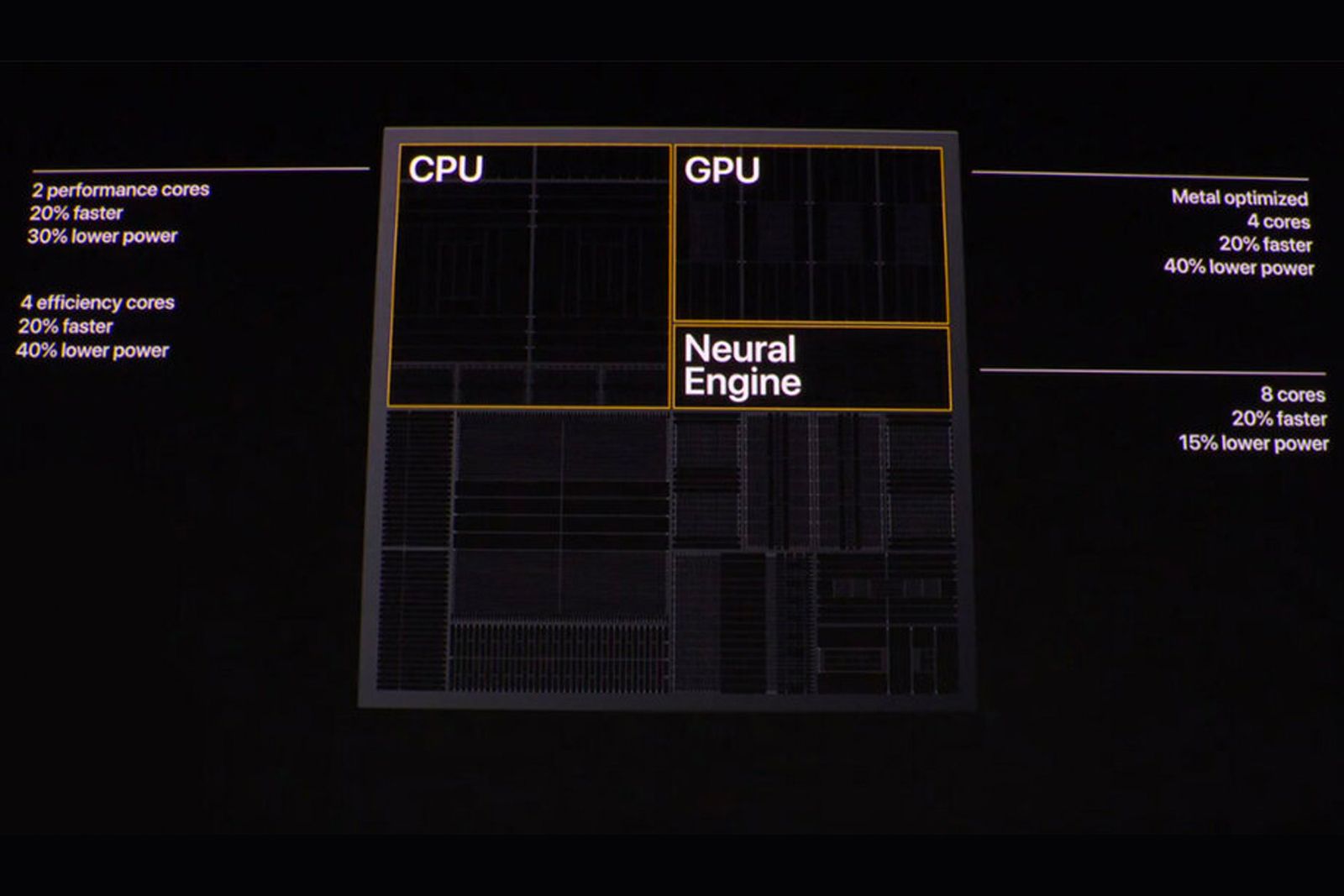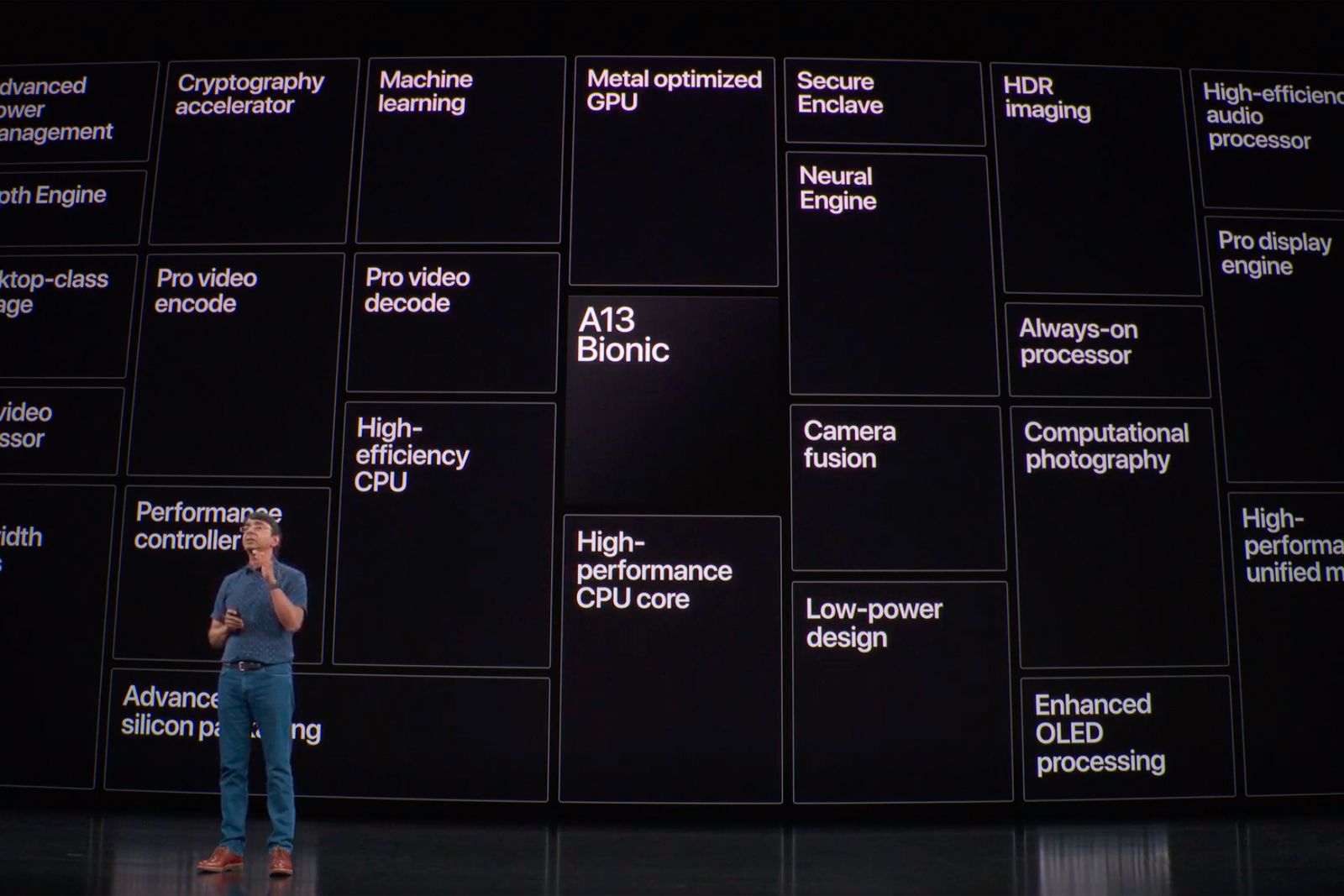Apple announced the next-generation A Series SoC (System on Chip) during its September event, but what does the new iPhone platform actually bring to the party?
Naturally, Apple's Kaiann Drance described the 64-bit A13 Bionic as "the fastest CPU and GPU ever in a smartphone", but until we see some benchmarks, we can't tell how true this is.
Apple showed a graph on screen at the launch that put performance ahead of the Qualcomm Snapdragon 855 inside the US version of the Galaxy S10+ and the Kirin 980 inside the Huawei P30 Pro, but at this stage we have to take that with a pinch of salt until benchmarks appear.
What will be interesting to see how it performs versus the incoming Kirin 990 inside the soon-to-be-launched Huawei Mate 30 Pro - that will provide a bit more of an indication of how the iPhone 11 and iPhone 11 Pro and Pro Max compares to upcoming flagship phones.
Like all smartphone SoCs, the A Series silicon is based around ARM designs, there are some elements that are more standard and common to other phone platforms. Last year's A12 Bionic had already lept to the 7nm production process now being used by other vendors like Huawei's HiSilicon.
The power of A13 Bionic comes from the 18 cores in use that all give a 20 percent power boost over the A12 Bionic - there are six cores in the main Apple-designed CPU based on an ARM design, four GPU cores and an eight-core NPU - a neural processor powering AI tasks, such as Siri, with a six-fold increase in its ability to process instructions.
Overall, the A13 Bionic has around a six per cent speed improvement over last year's A12 Bionic.
Four of the six CPU cores (called Thunder) are for basic operations that don't require a lot of compute power - think basic web browsing or making calls - while there are two cores (called Lightning, see what they did there?) designed for out-and-out performance when you're taxing the phone. The CPU and GPU cores use 30-40 percent less power than the equivalent cores in last year's A12 Bionic.
How the A13 Bionic is more power-efficient
Apple head of silicon engineering Sribalan Santhanam said during Apple's event that the new silicon is in fact based on a second generation of the 7nm process (actually down to manufacturer TSMC). That gives the power-efficiencies we talked about earlier - Apple cited battery life gains for all the new iPhones over last year's models as a result, generally giving a few extra hours of battery life.
Santhanam also talked about the chipset being able to better manage power going to the different areas of each core.
There are more transistors on the die, too; 8.5 billion versus 6.9 billion on the A12 Bionic. Santhanam said - somewhat predictably - that A13 Bionic is Apple's "most efficient" phone hardware to date. The Kirin 990, in contrast, has 10.3 billion transistors across eight CPU cores, 16 GPU cores, and three neural processing units. The Kirin uses ARM's own Cortex-A76 processor design.
The A12 Bionic was clearly already very efficient - our iPhone XS Max has a difficult time getting hot even when it's giving us full beans.
Enabling Deep Fusion
The A13 Bionic's NPU also enables the iPhone 11 Pro's Deep Fusion image processing, using AI to improve low light photography - clearly with Google's Night Sight in its, er, sights. The phone snaps eight image and one long exposure when you press the shutter button. The phone then assembles the final image. We'll get our first look at Deep Fusion over the next couple of months.
What about 5G?
Of course, one thing that the new iPhone platform doesn't have is 5G capability. It'll be interesting to see how and if Apple can follow Samsung, Huawei and Qualcomm in developing a platform with integrated 5G.
Samsung's new Exynos 980 - presumably destined for the Galaxy S11 - and Huawei's Kirin 990 - coming to the incoming Mate 30 series - are already announced and have that all-important integrated 5G.
Qualcomm is set to announce its next-generation platform, probably called Snapdragon 865, at its annual conference in December.
The first 5G iPhone is likely to use a Qualcomm X55 5G modem or its successor silicon (which again we might hear about later in the year) so, in theory, the modem would remain separate in the 5G iPhone. However, this may put the efficiency of next year's Apple A14 platform at a disadvantage compared to competitors.



